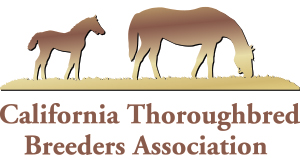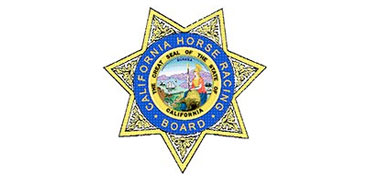By Bloodhorse.com
ARCADIA, Calif. (May 24, 2017) –The California Horse Racing Board’s Race Dates Committee, which normally handles year-to-year disputes between industry stakeholders in the Northern and Southern regions of the state, discussed a wider issue of horse racing’s future May 24 at Santa Anita Park.
Spurred by CHRB commissioner George Krikorian, the Dates Committee set out to discuss a radical idea—combining both regions of the state into one racing circuit, rather than two independent circuits.
A move to one circuit would be a monumental shift from the current operating procedure in California, which has both circuits running concurrently throughout the year.
This year Santa Anita has seen a significant dip in field size and even cancelled a Thursday card April 27 because the track’s racing office could not get enough entries to fill the scheduled races.
BALAN: Santa Anita Cancels April 27 Racing
“We’re faced with a number of challenging issues right now,” Krikorian said. “Field sizes, number of races, number of race days per week, inventory of horses, participants in major graded stakes races being weak, and so many other issues, including the breeding program in California.
“All these things have an impact. … So one of the things I’ve thought about … is to consider the concept of a single circuit … as opposed to a North or South circuit—to have a rotating calendar, where, if you’re racing at Golden Gate (Fields), you’re not racing in Southern California … and vice versa.”
“Everybody knows California is at a disadvantage for a variety of reasons, of which we have no control,” added CHRB chairman Chuck Winner. “We’re going to have to be creative if we’re going to be able to compete on a national level.”
Although Race Day Committee members said the topic was only a discussion and a starting point toward potential changes down the line, executives representing industry stakeholders largely dismissed the proposition or brought up other issues within the industry they felt were adversely impacting racing in the state.
California Thoroughbred Trainers president Jim Cassidy said the idea of a single California circuit “doesn’t sit well with me,” a comment that drew a retort from Krikorian.
“What we’re doing right now, is it working to your satisfaction?” Krikorian countered.
“It’s working for me, because I have a lot of horses and I run a lot of horses,” Cassidy responded. “This is the problem. There’s a lot of people who don’t run enough horses.”
That opinion—that trainers in California aren’t running enough of their available horses to fill the region’s racing cards—was just one issue Cassidy brought up, along with claimed or privately purchased horses leaving the Golden State and racing elsewhere.
“I have 40 horses here and I have a neighbor who has 40 horses,” Cassidy said of his stable at Santa Anita. “I’ve run 75 horses at the meet and he’s run 30. It goes on constantly. … People have to step up and do something for California, rather than themselves.”
CTT executive director Alan Balch echoed some of Cassidy’s comments, but also pointed out that the current landscape and modern economics of the sport would make a single California circuit “a disaster.”
“In the late (1960s), the calendar was expanded … and allowed for the expansion of racing in the North and South, to permit, at that time, racing in the South against racing in the North.” Balch said. “When the horse supply was approximately what it is now, in the late 60s—when Golden Gate or Bay Meadows were open, Santa Anita and Hollywood (Park) were closed. The exception in the summer was when the fairs were running and Del Mar was running.
“But you have to understand, as appealing as that seems to have a single circuit, the whole financial model for racing in California has changed since then. There was no simulcasting, there was no internet betting, there was no ADW, and the supply of racing nationwide was a much different situation. The whole way the law was structured—of where the betting money goes and how it’s divided was much, much different. … While it’s appealing on the surface regarding horse supply—we ought to card better races if all we’re racing is in the north or south separately—the economic model would be a disaster.”
Representatives from the three major racetracks in the state—Santa Anita, Del Mar, and Golden Gate Fields—all generally opposed or expressed concern regarding the idea for one California circuit.
For Tom Robbins, Del Mar’s executive vice president of racing and industry relations, his concern with the single-circuit plan involved connections from one region opting to run outside of the state when the circuit was not in their home region.
“What I would be concerned about is, if Southern California shut down for a month they’d go elsewhere,” Robbins said. “Ideally they’d go to Northern California, and it’s not for me to speak about the economics of the situation … but in a perfect world, all the horses would remain in California. Some might get a rest and others might go up and support Northern California or vice versa, but there is a concern … about (horses) getting attracted to other jurisdictions.”
Joe Morris, who was speaking for both Golden Gate and Santa Anita as The Stronach Group’s senior vice president of West Coast operations, acknowledged that field size at Santa Anita was down this year (from an average of eight horses per race at this time last year to 7.5 this year) but sent criticism into a number of spheres.
“If you take out the 2-year-olds, you’re down to 2,200 horses on the (Southern California) circuit,” Morris said. “We race about 1,100 in a month. That’s 1,100 horses that didn’t race (at) our training facilities in March and April. It’s just too high of a number and it’s higher than the number has been in the past.
“Why does that happen? Well, we had 26-27 inches of rain in that period, so that certainly interrupted the training routine some, but the rest of it is, we as an industry have to change the way we look at some of this stuff.”
Morris also cited frequent scratches as a contributor to shorter fields this year.
“We’ve run 12 races with less than five horses (at Santa Anita). We’ve carded zero with less than five horses, but we’ve run 12. There’s some mindset in owners and trainers—less horses, the better chance I have of getting a check. That’s true for that race, but what it does to the purse structure is just debilitating to us. On the weekend a less-than-five (race) costs us handle over $500,000. … We need steward help here, also.
“When we get into the number of scratches, on our Dec. 26 to April 9 meet, we ran (509 Thoroughbred races) and we had 533 scratches. That’s too many.”
Back on the topic of a potential single California circuit, however, Morris did not support the idea.
“These are big facilities. They’re expensive to run,” Morris said. “We make our money when we race, so not racing for periods of time, I don’t think works.”
As the conversation neared an end, the CHRB members did not appear to be satisfied with the direction of the discussion, and expressed their displeasure.
“With all those issues, we’re talking about maintaining the status quo,” Krikorian said. “We’ve sat here for a couple hours and I haven’t heard one suggestion about (any) substantial (changes).”
“Something has to be done. … It can’t stay the way it is, because we’re all going to pay the price at some point,” Winner added.


